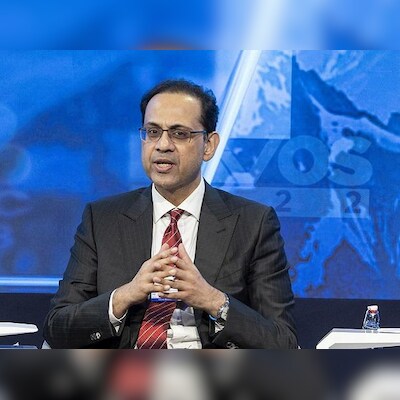Interest, trust of investors humbling: Sanjiv Bajaj on BHFL listing
Sanjiv Bajaj, Chairman and Managing Director, Bajaj Finserv | Photo: WEF
Sanjiv Bajaj, Chairman and Managing Director of Bajaj Finserv, on Monday said he expected 12-15 per cent credit growth in the housing finance industry, amid the strong tailwinds in the economy.
He was speaking at the listing of Bajaj Housing Finance in Mumbai. Speaking on the listing of the housing finance arm, Bajaj said the interest and trust of the investors were humbling.
“We had not expected for it to open the way it did. It also has an additional responsibility on management and the board. The way we have built a quality business in the last 7 years and we will move ahead in the same way,” he said.
“Our shareholders should expect a business that grows with high quality, high level of corporate governance, that brings the right blend of technology in this particular business, and sustainable growth with high focus on quality of the business and a diversified book is what we look forward to build,” he said.
Noting that Bajaj Housing’s growth rate is higher than what it was in the last few years, Bajaj said a combination of a diversified book, technological integration and focus on quality long-term business has driven growth for Bajaj Housing Finance.
“If you look at credit cycles in India, we expect steady credit growth at 12-15 per cent in the housing finance industry and on the back of that, we are enthused that we can continue to grow strongly. The economy is showing very strong tailwinds, and that’s what gives us this comfort,” he said.
The company plans to continue its focus across its key segments.
Atul Jain, Managing Director of the company, said that the demand for affordable housing finance would be more in the coming years amid a strong focus by the government on housing for all. The company also does not foresee a challenge in maintaining its margins and cost of funds, Jain said.
“We are a variable rate company. Our assets are variable, which are largely linked to our floating rate, which is linked to our cost of funds and the liabilities are also largely variable. So, on a steady state basis, through the cycles, mortgage companies generally have a steady state margin,” said Jain.
The cost of funds is relatively competitive compared to the market, and with a variable rate asset size, the NIMs are likely to remain stable, he said.
First Published: Sep 16 2024 | 8:10 PM IST
